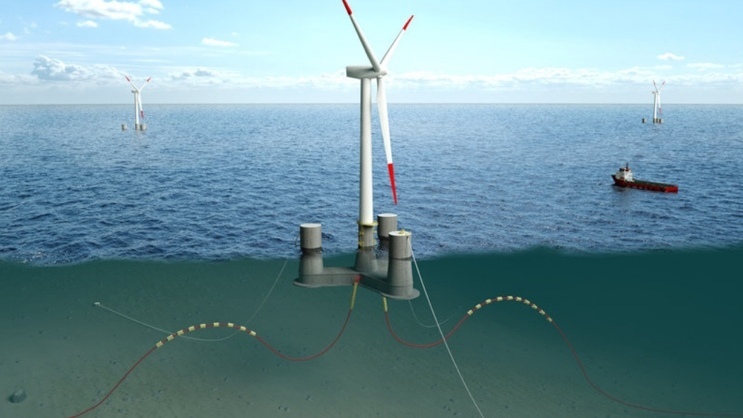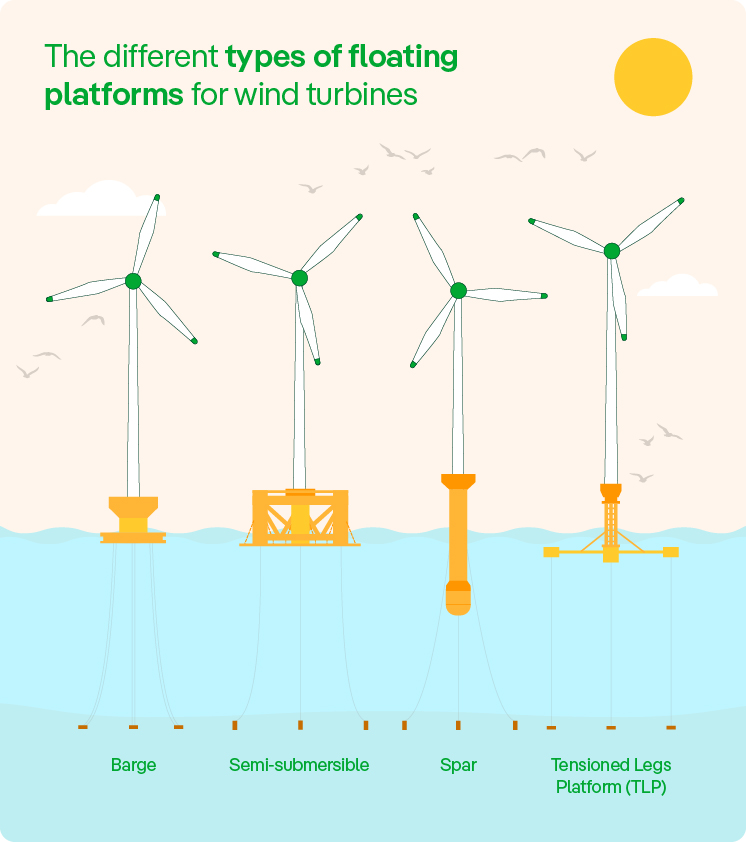
Why floating offshore wind could be the next frontier in renewables
Pension funds are allocating capital to this emerging technology, but is it mature enough to provide an appropriate risk-return profile?
Canada Pension Plan (CPP) has already allocated around $100 million to floating offshore wind, and expects this figure to grow to at least $1 billion by the end of the decade.
Other asset owners talking to Net Zero Investor have also expressed high levels of interest in this rapidly emerging technology.
UK-based NEST, for example, is looking at development opportunities in the Irish sea, as revealed by Net Zero Investor.
Such enthusiasm reflects a growing belief that floating offshore wind could be the next frontier in renewables investing.
“The history of renewables clearly shows that early movers can get better returns,” said Bill Rogers, managing director of sustainable energies group at Canada Pension Plan Investments. “Seeing where the next technology opportunities lie is an essential part of energy investing. We’ve been watching floating offshore wind for years now.”
But is the technology really mature enough for large-scale institutional investment?
With two projects in its portfolio, the CPP certainly thinks so.
The CPP began its floating wind journey by partnering with French energy company EDF and investing in a pilot project, with a combined installed capacity of 25 MW.
The three floating Provence Grand Large wind turbines have now been successfully installed 17 km off the French Mediterranean coast.
The fund then partnered with Ocean Winds to make a winning bid to develop 2GW of floating offshore energy off the Californian coast.
Floating offshore wind has several advantages over fixed installations, Rogers said.
Firstly, it allows the deployment of wind turbines in larger and deeper offshore areas with higher wind potential.
Secondly, the floating turbines and platforms can be built and assembled on land and then towed to the offshore installation site. That makes the construction process easier.
Thirdly, the ability to install them further from shore reduces visibility issues – people tend to view wind-farms as an eyesore – and thereby eases planning issues.
In addition, the “floating platform” technologies benefit from a century of deep offshore oil and gas experience.
Operational risks
“The main risks aren’t around whether the technology works or not but the operating parameters,” said Rogers.
That includes such considerations as how the floating platform interacts with the maritime environment and the frequency and severity of potential maintenance costs.
“Investors need to work with technical experts to model those operational parameters,” Rogers added.
Furthermore, the market still needs to figure out which of the 100 or so floating platform designs work best and consolidate accordingly, as it did in the early stages of solar and fixed-wind designs.
Certain turbine and floating platform designs may be better suited for some maritime environments than others.
Time and experience should clarify these nuances.

Pre-construction or post-construction?
Some pension funds like to wait until a renewable energy asset has already been built before putting money on the table.
This isn’t the case for CPP.
“Our capital is quite flexible, so we often like to develop projects, alongside partners, in addition to buying operational projects that are already fully de-risked,” said Rogers.
The last few years has seen intense competition for operating offshore wind assets. This has resulted in high prices and relatively low returns, a dynamic that has sharpened CPP’s focus on finding pre-construction opportunities, where there is less competition, with the option of selling once the project is complete.
Partnering with the right people and having the right expertise is essential for risk mitigation in pre-construction investments. “We employ about 50 offshore wind experts to sit alongside and EDF and Ocean winds,” said Rogers. “Their expertise is critical in making sure the projects progress as planned or even better than planned.”
Building expert teams is a “hallmark” of how CPP generally invests across renewables.
Others, such as NEST and its partner Octopus, also see potential value in getting involved at the development stage.
“Institutional investors, including pension funds, increasingly recognise the value that floating offshore wind investments can play globally,” said Alex Brierley, co-head of Octopus Energy Generation’s fund management team. “It’s a brilliant opportunity for long term investors.”
Octopus has invested in floating offshore wind developer Simply Blue since 2021, with projects across the globe.
It recently allocated capital to Deep Wind Offshore, an offshore wind developer with projects in Norway, Sweden and South Korea.
Government support
Floating offshore wind developments still require government support to make them commercially viable for investors.
“Many governments have already introduced subsidies for floating offshore wind, which is effective in helping bring down costs and scale the technology at the beginning of its rollout,” said Brierley. “We’ve seen reports that the global floating offshore wind pipeline has grown by a third in just twelve months. It's likely to accelerate further as investment in this technology continues to gather pace.”
CPP is particularly interested in France and the US, both of which actively support floating wind farms, but is also looking for opportunities across the globe.
“Like many new emerging renewable technologies, government support is essential to help establish the supply chain, create a learning curve, and ultimately bring down costs,” Rogers said. “We expect costs to continue to come down in the coming years.”




